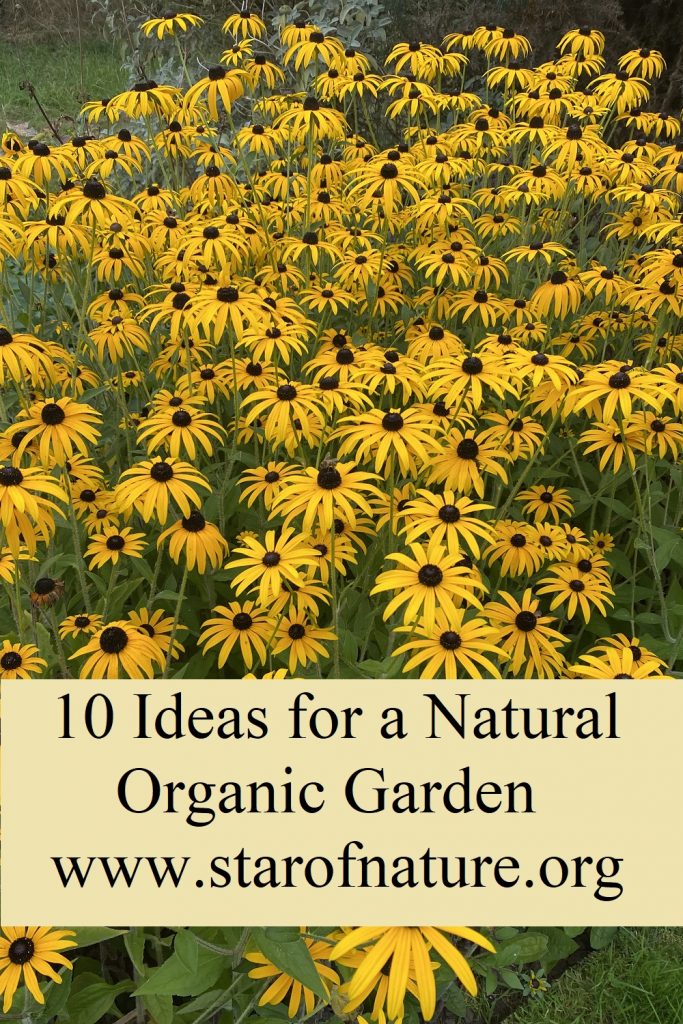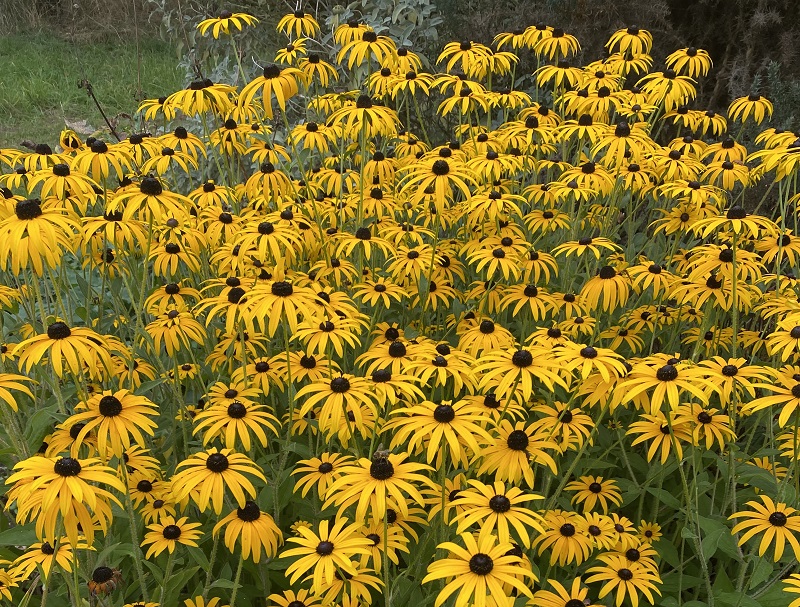10 Ideas for a Natural Organic Garden
Is it possible to garden in harmony with nature, without chemicals and exhausting work? A natural organic garden that is beautiful, enjoyable and does not take a lot of time is entirely possible. Here are some ideas.
1. Respecting the needs of plants
This is probably the most important advice of all. To have healthy and beautiful plants, we need to ensure that they have a place in the garden that suits their needs as well as possible. If plants are given a wrong place, they will suffer, and eventually succumb to diseases and pests. And they certainly will not look attractive.
For example, a sun lover should not be planted in shade, and plant that requires wet soil, should not be planted in a place where the soil is consistently dry.
Experience has shown that happy plants can defeat their enemies and grow well without pesticides, chemical fertilizes, constant watering and other time-consuming care. When buying plants, read carefully the explanation of their needs, usually printed on a label, or speak to the seller to find out.
Consider where you will put them, and whether you have a good place for them. This is definitely a situation where less is more: fewer, but happier plants is definitely better.
2. Sanctuaries for insects
Sanctuaries for insects are essential for a natural organic garden. This is an important strategy that helps to avoid the use of insecticides. It is very easy to create welcoming habitats for insects – simply leave some space in the garden for native plants. Even a small space given to nature will have a beneficial effect.
It is often wrongly assumed that land given to wild plants and left without mowing will be a source of pests and diseases. In fact the opposite is true. Experiments have shown that fields with margins taken over by native plants have less damage from pests around the edges than in the middle.
Native plants harbour predatory insects, and a very large number of insects are carnivores and eat other insects rather than plants. Predatory insects include ladybirds, ground beetles, soldier beetles, lacewings, dragon flies, wasps, hoverflies, spiders and many other. For example, a lady bird and its larvae eat about 150 greenfly each day.
If predators are present in the garden, they will not allow pests to increase without control.
Experience of organic farmers, who tested this and other strategies for many years, shows that sanctuaries for insects really help to garden without pesticides.
Read more about sanctuaries for insects.
Read more about the problems of chemical pest control.
Read also about the methods used by Iain Tolhurst, a commercial small-scale vegetable grower from South Oxfordshire, UK, who pioneered self-sufficient, vegan, no-stock growing methods. He talks about sanctuaries for insects in his videos.
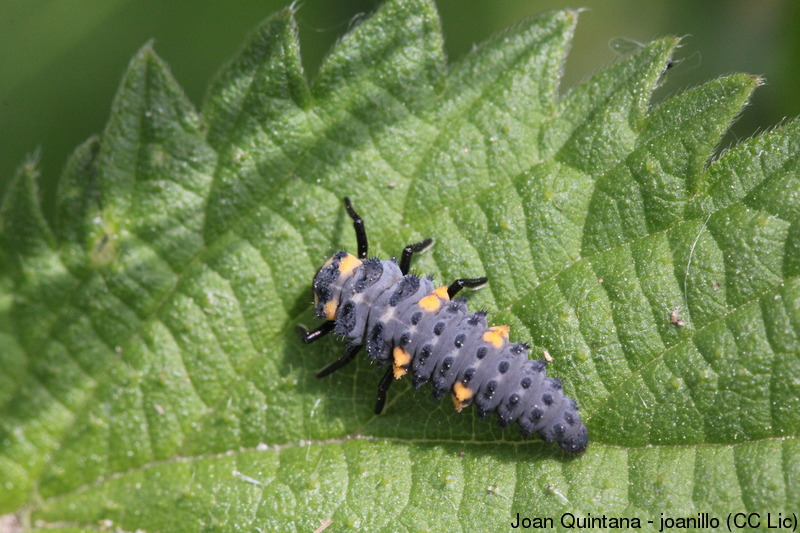
3. Organic mulch
A natural garden will benefit from the use of organic mulch. Mulch is loose covering placed on the surface of soil. Ideally it should be spread over any bare soil. Organic mulch can be made from leaves, straw, grass cuttings, weeds, bark, wood chips and many other plant materials.
Mulch provides numerous benefits. If layered at least 5 cm thick, it will suppresses weeds. This is because most seeds need to be close to the surface in order to grow.
Mulch also keeps the soil moist, reducing the need for watering. It enriches the soil with organic matter and encourages the growth of beneficial bacteria that make nutrients accessible to plants. It attracts earthworms that take organic matter deep into the soul. As a result, the soil becomes more fertile and its structure improves dramatically. It becomes penetrable to water, air and the roots of plants.
Read more about looking after your soil:
Garden Soil: Why Soil is Important and How to Restore it?
Four Types of Organic Plant-based Fertilizers
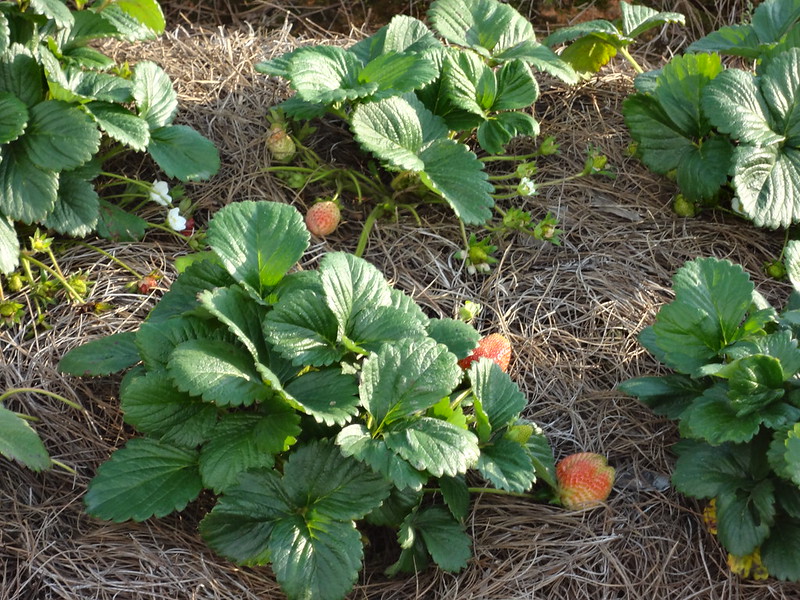
4. Plants immune to slugs and other pests
Many gardens suffer from a specific pest or a problem, forcing us to use chemicals and put in a lot of work trying to defeat it. Instead of constantly fighting a pest, use plants that are immune to it.
For example, slugs and snails are difficult to get rid of organically because they have very few natural predators. But luckily for us there are plenty of beautiful flowers that they never touch. These include lavender, geraniums, columbine, alchemilla, stachys, rose, peony, astilbe, veronica, nepeta, foxglove, pyrethrum, pinks and carnations, sweet Williams, begonia, fuchsia, salvia, penstemon, heuchera, sanguisorba, decorative grasses, nasturtium and cornflower to name just a few.
Flowers commonly sold as summer bedding, that are less vulnerable to slugs, include lobelia, alyssum and snapdragons. Here is a much fuller list of plants that slugs do not eat: Slugs in the garden: a list of plants they will not eat. Some combination of these plants would make a wonderful flower display.
Plants vulnerable to slugs, such as dahlias, lupins, marigold, nicotiana and petunia can still be grown in pots protected with copper tape or placed where they are inaccessible to slugs, for example on a garden table.
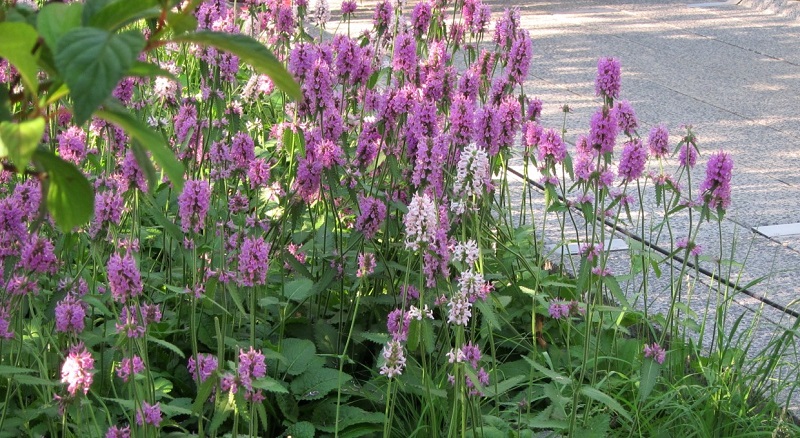
5. Green manures
Green manures is another excellent addition to a natural organic garden. These are plants grown specially to improve the soil. Many different plants can be used for this purpose. They have different properties and can be chosen to solve specific problems, such as poor and compacted soil, weeds, pests and diseases.
Commonly grown green manures include phacelia, lucerne, beans and peas, buckwheat, mustard, oats and rye, oilseed rape, vetches, clover and many others.
Green manures can be planted in early spring, as soon as the soil warms. They will grow quickly as the weather improves. Some will flower providing nectar and pollen for bees and butterflies. Insects attracted in this way to the garden will pollinate other plants, such as flowering fruit trees.
In May green manures can be either integrated into the soil, or simply mowed and used as mulch. Two or three weeks later tender vegetables can be planted in their place, such as courgettes, tomatoes or beans.
Green manures can be also sown in autumn, as soon as vegetables have been harvested or annual flowers have finished their life cycle and declined. They will stay as a cover crop for winter, protecting the soil and preventing erosion and the loss of nutrients.
Read more about green manures.
6. Home-made, organic plant-based fertilzer
Make your own organic fertilizer from plants. It should not cost anything, since its only ingredients are plants and water. It will enrich the soil with nitrogen and other minerals.
To make the fertilizer:
- collect and roughly chop the plants
- put them in a container, making it half full
- fill the container with water
- leave for 14 days
- use diluted with water in the proportion 1:10.
Most weeds can be fermented in this way. Some of the best plants for a fertilizer are nettle and comfrey.
Read more about making plant-based organic fertilizers.
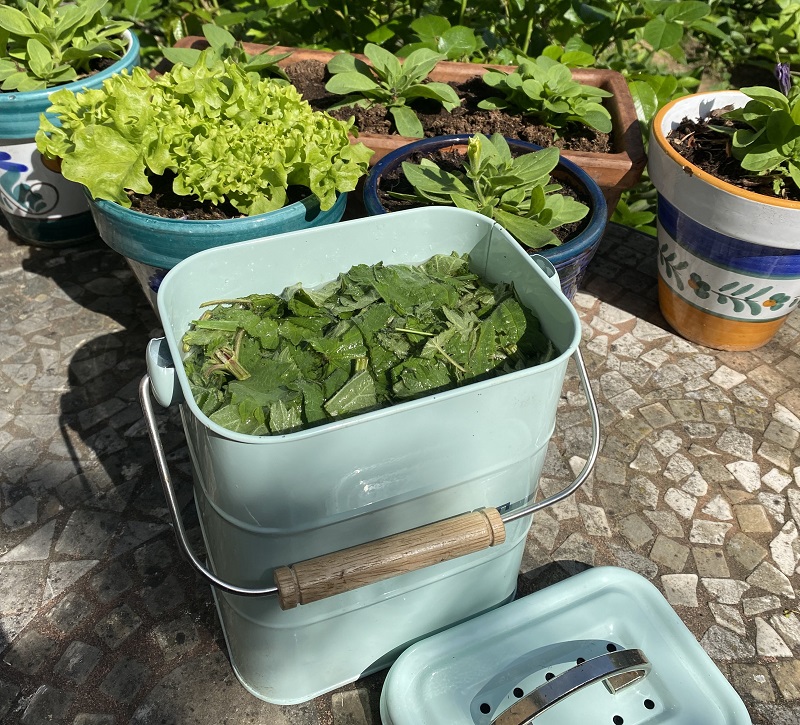
7. Companion planting
Monoculture does not belong in a natural organic garden. Give it up and plant together vegetables and herbs that will support each other. Here are a few examples:
- Calendula, that is very easy to grow from seed, repels several tomato pests, including whitefly and hornworm.
- Carrots and onions or leeks are good companion plants, because the smell of onions deters carrot root fly.
- Mint planted next to cabbage, kale, or cauliflower helps to deter flea beetles.
- Mustard and fodder radish planted next to tomatoes and potatoes help to suppress fungal diseases, such as wilt.
Read more about companion planting: Companion Planting for Vegetables in an Organic Garden.
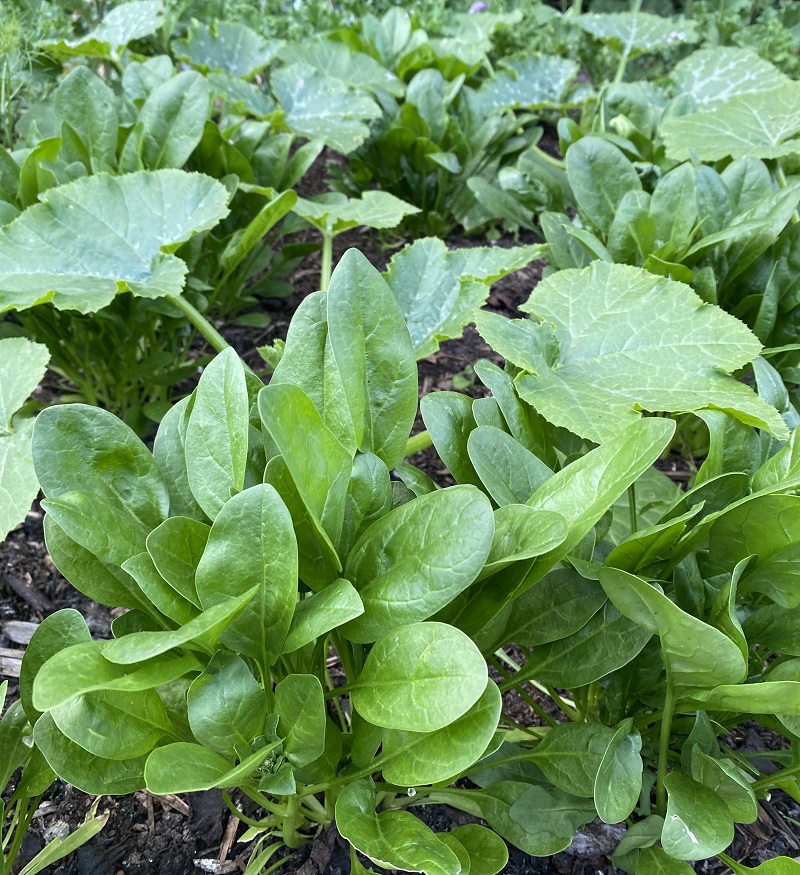
8. Perennial wildflower lawn
Give a part of your lawn to perennial wildflowers. They will look beautiful and attract beneficial insects, such as honeybees and bumble bees. Bees and other insects will pollinate fruit trees and vegetables such as cucumbers, courgettes and pumpkins.
Wildflowers are now increasingly sold in garden centres, but young plants or seeds can be also bought from specialist nurseries. Some of the best plants to use are lily-of-the valley, pulmonaria, geranium, achillea, lady’s mantle, clovers, salad burnet, knapweed, elecampane, primula and many other.
Read more about how to grow wild flowers in the garden.
Here is a list of the best nectar-producing flowers for bees arranged by productivity.
And here are some suggestions about pollinator-friendly wild flowers for the garden:
Best Wild Flowers to Grow in the Garden
Best Wild Flowers for Bees and Butterflies
Medicinal Wild Flowers for your Garden
9. Plant and wildlife diversity
Make an effort to increase diversity of plants in the garden. A wide variety of species in vegetable and flower beds improves the health of the garden. Plants that flower at different times will attract pollinators throughout the season. Vegetables that you don’t normally grow could become part of your rotation or companion planting.
Diversity distracts pests and prevents diseases. For both pests and diseases monoculture is an ideal situation – plenty of food and no predators or deterrents. For this reason wild plant communities tend to be very diverse and monoculture is avoided in nature.
10. Garden as home for birds
Install bird feeders and baths. Birds are fantastic helpers in a natural organic garden. They can clear the garden from harmful insects more safely and efficiently than chemicals. Their presence will helps to establish a balance between predators and pray essential in any natural community.
Read more: How to Attract Sparrows to your Garden
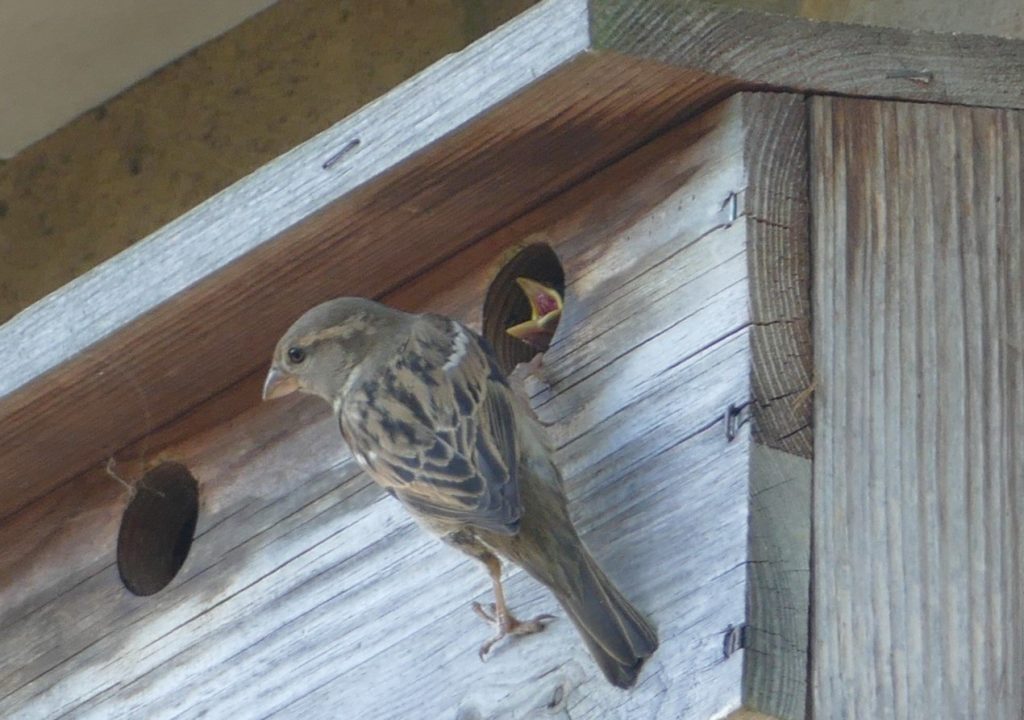
Image credits: strawberries by Kun Shan; Stachys officinalis ‘Hummelo’ by cultivar413.
Posts related to ’10 Ideas for a Natural Organic Garden’
Organic Pest Control: Sanctuaries for Beneficial Insects
Green Manures: Vegan and Organic Soil Improvers
Small Scale Rewilding: How to Rewild your Garden
‘Wilding’ by Isabella Tree: a Review
Pin ’10 Ideas for a Natural Organic Garden’ for later
